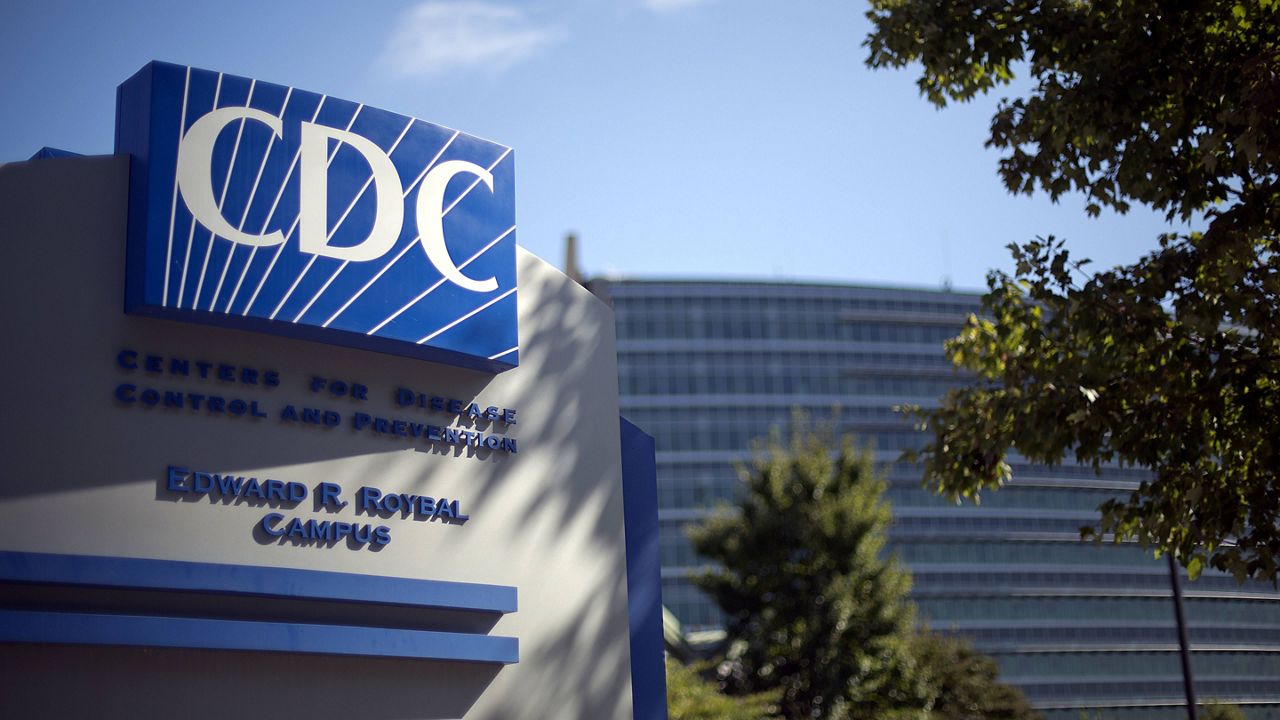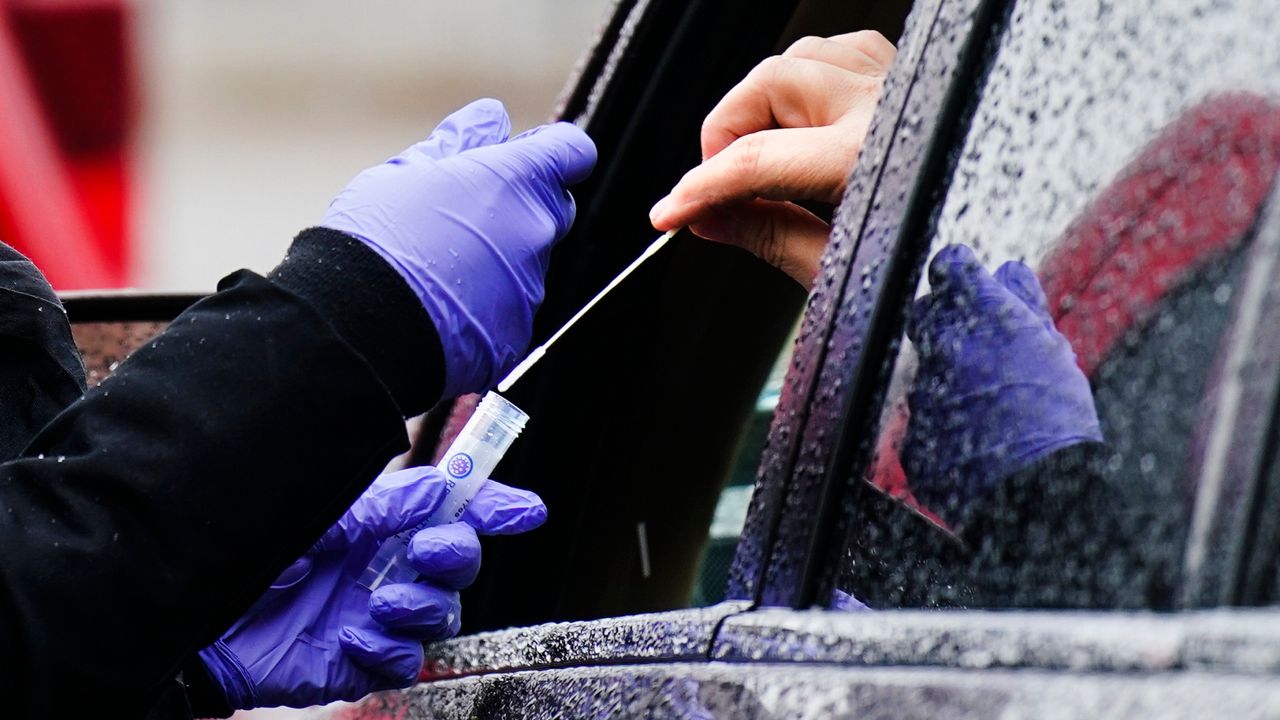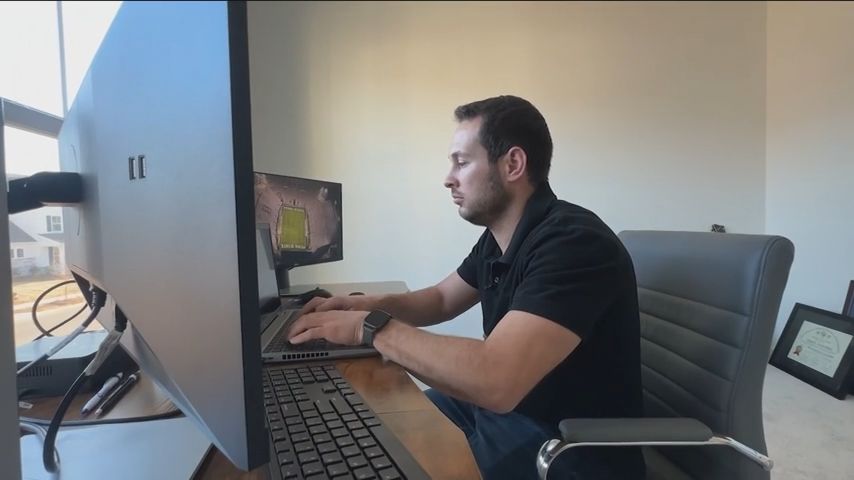ORANGE COUNTY, Fla. — Kristyn and Tim Baker say that learning can be hard sometimes for their two sons, Bradley and Jacob.
What You Need To Know
- Some students falling behind in education during pandemic, experts say
- Hybrid learning not sufficient in educational delivery or quality, professor says
- Youth with special needs, lack of support could be set back long-term
- Helping students catch up will be costly, specialists in many fields indicate
Bradley, who is 9 years old, is on the autism spectrum, and 6-year-old Jacob has a genetic seizure disorder.
"They were sending him home every day because he had a seizure,” Kristyn Baker said. “He has multiple seizures every day. They’re not what you always think of as a seizure.”
The Bakers, who live in Orange County, were able to get him into a public, special-needs school in February 2020.
“It was a self-contained, special-needs unit where they had nurses; there were a lot of paraprofessionals there,” Kristyn said. “It was almost a one-to-one ratio... and he was making progress and he was making gains.”
But Jacob was only there for about three weeks before the pandemic forced him and his brother to learn from home.
“When the pandemic hit, those gains stopped, and trying to teach a kid in prekindergarten or kindergarten virtually, their attention spans sitting there and trying to learn is not even 5 minutes,” Kristyn said.
The boys returned to in-person learning at the start of this school year.
But the Bakers said making sure they get the quality education they need, even in person, has felt like a losing game.
“Then this year, (one of the boys) has been quarantined a couple times, which happens, and we’re grateful they put safety first. But trying to transition a student back and forth, especially when it gets into a routine, it’s been difficult,” Kristyn said.
“The pivoting from face-to-face to digital, it’s not like a gradual thing... ” Timothy Baker said. “They went face-to-face on Tuesday, and now you’re pivoted to virtual Wednesday, so it’s a very abrupt change, and that’s had an impact on (my son) as well.”
Frequent quarantines are just one example of the many ways COVID-19 has disrupted education over the past year.
In Reality, Students Losing Ground Because of Virtual, Hybrid Learning Plans
Scott Hewit, director of teacher education at Rollins College in Winter Park, said the pandemic forced school districts to hastily push students into virtual learning.
“Anybody who thinks online learning is better is wrong,” Hewit said.
He's not referring to virtual schools such as Florida Virtual, which are built for online learning. He’s talking about hybrid learning models.
School districts had to create the hybrid learning models after Gov. Ron DeSantis mandated that students could return to classrooms in Florida at the start of the 2020-21 school year.
In this modality, teachers instruct students in the classroom, and off a laptop digitally, at the same time.
“That last modality is far and away the most problematic,” Hewit said.
Many parents praised this model because it allowed for those who don’t feel safe to stay home, and those who need to be in the classroom to return.
Some school districts loved it because it preserved their per-student funding.
As far as actual learning goes, however, Hewit said hybrid learning leaves much to be desired.
“It has created an online educational experience that is dramatically inadequate... ” Hewit said. “Picture, if you will, a teacher in a classroom, with half of his/her students right there with her, and the other half on her little laptop — and in some cases, with internet problems, and in some cases, not turning on their cameras.
"The whole issue of a student not turning on their camera is very problematic.”
Plus, the learning for students who are face-to-face in those hybrid classrooms also suffers, because their teacher's attention is divided, Hewit said.
The impacts on education delivery and quality are creating an ever-widening gap, he said.
“Because the failure rates are skyrocketing... This gap between students who are in school or students who are online, or supposedly online, is growing,” he said.
Rising Failure Rates Point Toward Long-Term Concerns
Those gaps can stay with students for years to come, according to Pamela "Sissi" Carroll, dean and professor of the College of Community Innovation and Education at the University of Central Florida.
Evidence of those gaps can be observed in historical events that prevented children from learning in a classroom for an extended period of time.
“Looking at the impact of school loss on children during World War II... Some studies of children in Europe who were out of school for maybe a year or longer, there has been evidence that the gap that they suffered through, during the war, has stayed with them for as many as 40 years,” Carroll said.
The longer we continue in this pandemic-like scenario, the more the learning loss grows, she said.
A learning loss of maybe a half-year or up to a year in math and reading is possible.
“And that’s if things go pretty well,” Carroll said.
Chaos and Isolation Can Cause Mental Health and Development Issues
Impacts don’t stop with the learning loss either, according to Sharon Carnahan, Rollins College psychology professor and executive director of the Hume House Child Research and Student Development Center.
“Chaos and isolation are the real emotional killers,” Carnahan said.
That chaos and isolation that students have had to endure over the past year have increased rates of mental health problems in students, she said.
“The reports are coming in, and they’re showing significantly higher levels of student-reported stress and depression,” Hewit said.
Carnahan said the stress can also impact them long term.
“You’re seeing symptoms that are almost like PTSD... which, if prolonged, could have effects on their developing brains,” Carnahan said.
These impacts are accentuated for minority students and those living in poverty, these experts agreed.
“Stress levels in already struggling homes went right through the roof,” Carnahan said.
"I'm particularly worried about students with lack of access to online learning... ” Carroll said. “There’s real potential for increase in learning gaps, particularly for those living in poverty, and typically that includes our Black and brown students."
Some Innovative Teachers Help Students Thrive, Despite All the Problems
Despite all the challenges, plenty of teachers found innovative ways to overcome them over the past year.
“I went down to an elementary school in South Orlando last Friday, one of our 2020 graduates, first-year teacher, in the pandemic, and I walked into her classroom, and there were 18 first-graders who were over the moon with excitement and enthusiasm because they were playing a math game,” Hewit said.
“They were all masked, and she was using technology, and she was smiling, and she was just as excited as they were, and the atmosphere was remarkably positive.
"We have a lot of teachers out there who are doing miraculous work.”
These experts also agreed that children can be extremely resilient. Knowing that, the Bakers are hopeful their sons will overcome their learning losses.
“I want to see them be successful,” Kristyn Baker said. “I don’t think either of us are the parents where you have to get straight As. We just want to see that you’ve made gains, you’ve made progress.”
Children with strong familial support, like the Bakers, are much more likely to win out in the end, Carnahan said.
But Central Florida children who don’t have that kind of support could face long-term challenges.
“The ones who are already cared for and loved are going to recover quite well... ” Carnahan said. “I think the children who are at risk before (the pandemic) may show permanent delays in schooling, and effects that end up making them permanent members of an underclass. And I’m very concerned about that.”
Massive Funding Needed to Help Students Get Back on Track, Experts Say
To get students back on track, it’s going to take funding and intervention at every level, the educators said.
Government leaders must be able to fund more time in school for students, teachers, and other support staff, for before- and afterschool programs and for summer programs, Sissi Carroll of the Orange County school district said.
Scott Hewit of Rollins agreed that the state government must step up: “We’re going to need to make sure that we look carefully at state funding of schools this year, because schools can’t operate with reduced funding,” he said.
The federal government must consider school funding this year, “a national emergency, at the highest level,” student development expert Sharon Carnahan said. “I think we need to have major, Roosevelt-era style programs."







_PKG_CENTRAL_PARK_HOSP_CG_133817001_3232)

